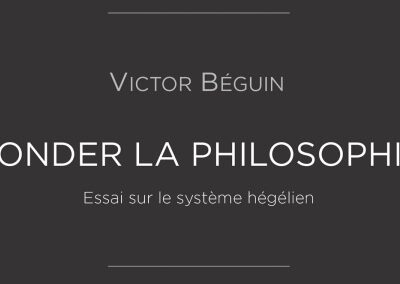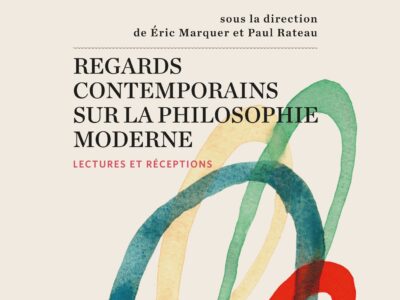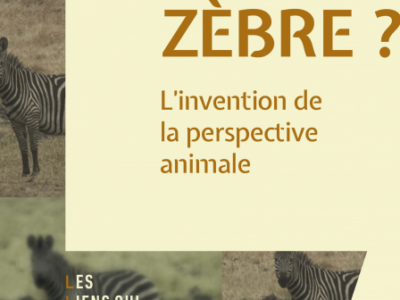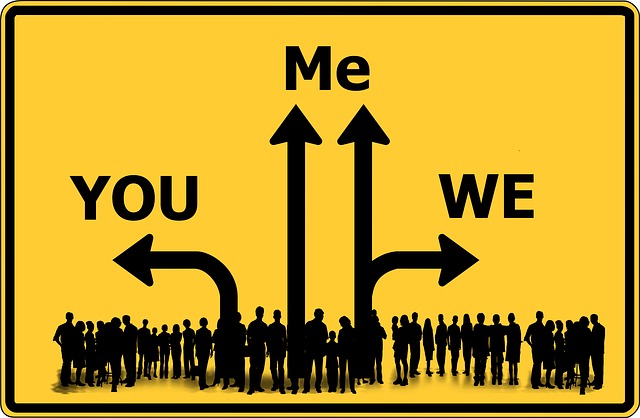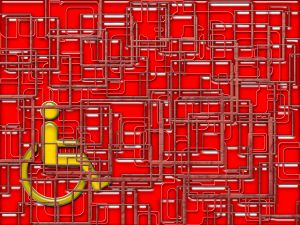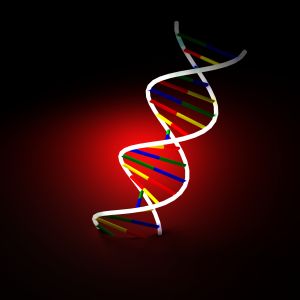Feminist Bioethics : Embodiment, Alienation and Identity
Donna L. Dickenson Emeritus Professor of Medical Ethics and Humanities, University of London
Conventional bioethics frequently lacks a political dimension, especially in the individualistic Anglo-American context. The continued dominance of utilitarianism, particularly in the United Kingdom, has been built on a simplistic assumption that whatever medical science proposes must be good for the general welfare. Although many of the original bioethicists saw themselves as challenging the status quo,[1] some observers have accused mainstream bioethics of failing to investigate and interrogate the social and economic determinants of biomedicine.[2] This uncritical perspective is often backed up by an equally simplistic assumption that patient autonomy and choice are paramount– a derivative and misguided form of Kantianism, which actually conflicts with the utilitarian bias. Although Anglo-American bioethics began in the 1960s with a more critical agenda, it has been said that it ‘is no longer (if it ever was) a free-floating, oppositional and socially critical reform movement’.[3]
Feminist bioethics, by contrast, is explicitly political. While feminist bioethicists do not oppose scientific developments that genuinely benefit women, they have been readier than most mainstream bioethicists to ask whether these developments will benefit everyone equally, and in particular how they will affect women. They have brought issues of power, oppression and exploitation to the forefront of biomedical ethics. They have also been concerned to develop a relational notion of autonomy, to consider the limitations of free choice, and to foreground justice in their analysis. Finally, feminist theorists, including feminist bioethicists, have developed complex and sophisticated analyses of embodiment, alienation and identity. In reworking these concepts to incorporate women’s lived experience, feminist bioethics has amply demonstrated its philosophical depth.
Before discussing how feminist bioethics has undertaken a deep conceptual reworking of key philosophical concepts, however, this article looks at the areas of practical ethics on which it has concentrated. These topics include reproductive issues but are by no means limited to reproductive issues, as some critics wrongly allege.[4] For example, feminist bioethicists have had a considerable impact in critiquing stem cell research, even forcing the scientific world to re-examine a prominent development in stem cell science that turned out to be fraudulent as well as exploitative of women.
Feminist bioethics, reproductive issues and stem cell technology
A key insight of feminism has been that the new reproductive technologies (NRTs) are not gender-neutral. Because women bear a disproportionate share of the risks and burdens associated with NRTs, it is right that their situation should be considered specifically. For example, if there were to be a general movement towards using preimplantation genetic diagnosis (PGD) to identify and eliminate embryos with adverse genetic mutations, or more speculatively to develop ‘enhanced’ individuals with higher cognitive powers[5], women would be asked routinely to undergo the additional burdens associated with in vitro fertilisation (IVF), which is normally a prerequisite for PGD. These risks include potentially fatal ovarian hyperstimulation and other risks associated with invasive procedures. Advocates of ‘enhancement’ who claim that we should produce the best children possible[6] rarely consider this burden on women; it has taken a feminist analysis[7] to bring that to the forefront.
Feminist analysis has been crucial in pointing out the way in which women are made to bear the primary ethical and legal responsibility for the health of their fetuses and babies. For example, in the United States, women in some states have been prosecuted in criminal courts and imprisoned for causing harm to the fetus through their own drug addiction. Although evidence suggests that defective sperm are implicated in many genetic disorders, the prevailing discourse is solely in terms of female responsibility.[8]
Of course feminism has been strongly associated in both the United States and Europe with the movement against criminalisation of abortion. There is a potential contradiction between the ‘pro-choice’ ideology of that movement and my earlier statement that feminism has been sceptical about ‘choice’ as unconditioned and genuine. However, feminist bioethics has not relied solely on the argument from the woman’s ostensible free choice: for example, it has also made use of arguments concerning bodily integrity and consent[9] or property rights over a woman’s body[10]. Catriona MacKenzie has explicitly criticised the choice argument, offering instead a feminist phenomenological account of pregnant embodiment that stresses the ‘moral particularity of pregnancy’.[11] Carolyn McLeod and Francoise Baylis likewise argue that even pro-choice feminists should consider the embryo’s status in relational terms rather than treat it merely as an object.[12] In a brilliant analysis confirming my contention that feminist analysis is typically concerned to expand bioethical discussion to include the power dimension, Melinda Cooper has examined the obsession in the United States with the creation and status of embryonic life in terms of the role of American debt creation in world politics.[13]
Yet no matter how valuable its contributions in relation to new reproductive technologies, we should not see feminist bioethics as being limited to reproductive issues: that would wrongly be to accept the way women are commonly defined solely in terms of their reproductive role.[14] In stem research, for example, it required a feminist analysis to bring the fraud perpetrated by the Korean scientist Hwang Woo Suk to light. When Hwang published an article in the prestigious journal Science claiming to have created eleven personalised stem cell lines, the El Dorado of stem cell research,[15] few in the scientific world questioned where he had obtained the large numbers of human eggs necessary for his technique, somatic cell nuclear transfer. Together with critical investigative reporting by the journalist David Cyranoski (fn) and the Korean broadcaster MBC, the feminist organisation Korean Womenlink played an important role in showing that Hwang had illegally bought many eggs and put pressure on his female junior researchers to ‘donate’ theirs. [MAJ 17/4/15 – ref : David Cyanoski, ‘Stem-cell research: crunch time for Korea’s cloners, Nature 429, 12-14 (6 May 2004) doi:10.1038/429012a] . A total of 2,221 eggs from 119 women were used, of whom 15 developed potentially dangerous ovarian hyperstimulation[16]—all in vain, because Hwang had not actually developed any stem cell lines at all.
It was neither the refereeing process at Science nor questions from the stem cell research community, but rather the activities of Korean WomenLink, that set in motion the chain of events eventually exposing this fraud. Feminist analysts were already well aware of the tremendous wastage rate in SCNT technology, a variant of which was used to create the first cloned animal, Dolly the sheep. While most bioethical analysis at the time Dolly was created hinged on questions of identity, feminists focused on the large numbers of sheep eggs—over 400– and ‘surrogate mother’ ewes—267– needed to produce one single clone. If reproductive cloning were ever legalised for humans, feminists asked, what protections would be offered the human surrogate mothers required in the process? How would such large numbers of eggs be procured? Might a global trade in enucleated eggs for research develop, in which the cheapest ‘providers’ would be poor women in Africa?[17] Feminists focused not only on the science itself, but also on the economic and political background behind it.
Feminist bioethicists have pointed out the similar assumptions in both stem cell research and the international trade in eggs that women’s tissue can be readily transformed into ‘biocapital’ and that there are no ethical barriers to prevent commodification of their reproductive labour.[18] Consistent with this overtly political approach, they have demonstrated how this trade has arisen simultaneously with a neo-liberal, laissez-faire approach to regulation in the Anglo-Saxon countries, although markedly less so in France and Germany.[19] France, which has consistently banned the sale of eggs from the earliest days of its bioethics legislation, renewed the prohibition against markets in oocytes in the latest revision of the laws, completed in June 2011. While the concepts underpinning the French model of regulation also have their provenance in Western political philosophy, like the laissez-faire liberalism and utilitarianism that dominate US and UK debate, they embody a very different set of social attitudes towards egg sale and commercial surrogacy.
However, even in France there is a strong movement favouring a regulated form of gestation pour autrui, to which many leading feminists subscribe[20]. It would likewise be misleading to imply that all feminist bioethicists have opposed the commercialisation of human eggs. Particularly in the United States, it has been difficult for feminists to criticise egg sellers’ decision to commodify their eggs because it appears to question women’s choice and competence in a paternalistic manner. Abortion reformers having rallied under the banner of ‘women’s right to choose’ since the 1970s[21]. In this context, any attempt to regulate women’s untrammelled ‘freedom’ to sell their eggs may be distrusted.
For example, in August 2013 Governor Jerry Brown of California was criticised by some feminists for vetoing a bill that would have overturned the state’s prohibition on women selling their eggs for stem cell research. These pro-commodification feminists argued that women should be allowed to make up their own minds. Opponents of commodification supported the bill, however, pointing out that because there is no follow-up research on the after-effects of ovarian hyperstimulation in egg sellers, it is impossible to give a truly informed consent to the procedure based on knowledge of the risks. This dichotomy between those feminists who favour free markets and those who call for regulation can be further subdivided into those who wish to use regulation in order to prevent commodification of the body and those who see regulation’s role as limited to eliminating the worst excesses of free markets in women’s tissue[22].
In all these areas of practical bioethics, feminists have both drawn on and helped to further develop intriguing and often profound challenges to canonical concepts. In a dialectic manner, they have used praxis to inform theory and theory to inform praxis.
Three principal foci of this theoretical re-examination of canonical concepts have developed: 1) property in the body, alienation and exploitation; 2) autonomy and choice; and 3) embodiment.
Property in the body, alienation and exploitation
As the practical examples above have illustrated, women’s role in creating the wealth produced by the new biotechnologies—‘biocapital’—is often insufficiently recognised. In particular, women’s labour is rarely recognised as the product of a purposeful independent agent. Although women’s labour, not least in the labour of childbirth, that is rarely recognised as labour; for example, surrogacy is commonly described as merely ‘renting a womb’, omitting the risks and pain of childbirth altogether and drastically reducing the mother’s agency.
While in liberal political theory, particularly in Locke, it is labour that grounds the right to property, women’s labour in creating the products of the new reproductive technologies typically goes recognised by mainstream liberal theorists.[23] It might be thought that Marxism would have more to offer in terms of a feminist analysis, but Marxism is also limited in its applicability. Many feminist theorists have picked up on the psychological aspects of the Marxist concept of alienation[24], but few have applied it to economics and technology. Yet in Marx, alienation has not so much to do with the psyche as with the notion of external, forced labour. In the Grundrisse Marx notes that under the capitalist system which produces alienation, ‘labour always appears as repulsive, always as external forced labour; and not labour, by contrast, as “freedom and happiness”’[25]. Neither Marx nor Engels sees the oppression of married women as a form of alienation, which is characteristic only of relations under capitalism; domestic work is instead a non-capitalist anomaly.
From the early days of the ‘Woman Question’, however, beginning with writers such as Mary Wollstonecraft and Margaret Fuller, feminists have insisted that women’s domestic labour is actually external and forced, even the creation of that most intimate ‘product’, children. By contrast, they have argued, women are encouraged to think of their labours for the family as ‘freedom and happiness’. Thus feminists have extended the logic of alienation into marriage, and specifically into what Marx terms reproduction: restoring the labour capacity of existing workers through providing food and creature comforts, and replenishing the future supply of labourers through childbearing and childrearing. Feminist bioethicists have extended that notion still further, to encompass the new reproductive technologies in bioethics.[26]
The French feminist theorist Christine Delphy substitutes what she terms ‘the domestic mode of production’ for Marx’s notion of reproductive labour. As she writes, ‘[F]ar from it being the nature of the work performed by women which explains their [women’s] relationship to production, it is their relations of production which explain why their work is excluded from the realm of value. It is women as economic agents who are excluded from the (exchange) market, not what they produce.’[27] Hers is a more promising approach than Marx’s: Delphy defines alienation in terms of lack of power and economic agency. What Delphy adds is an explanation of why women do not own their labour in the home, why their labour there is properly regarded as alienated, and why the home is correctly seen as a mode of production to which a Marxist analysis of labour as alienated can rightfully be applied. Delphy regards housework as excluded from market relations not by its very nature, as Marx and Engels do, but simply because it is done by women.
This analysis can be extended to the provision of eggs in stem cell technologies, for example, in the phenomenon that I call ‘the lady vanishes’.[28] In the Hwang case, few commentators noticed that the ‘harvesting’ of human eggs was necessary for the SCNT technique, and fewer still asked where those eggs were coming from. Where the components of ‘biocapital’ are provided by women, they will typically be excluded from critical analysis, and women who labour as surrogate mothers or as egg providers will be more vulnerable to exploitation.
Yet when everyone else is making a profit from women’s tissue, as some US commentators assert,[29] isn’t it exploitative to expect them to undergo the laborious and risky procedures in egg donation out of pure altruism? One-way altruism is in fact better known as exploitation, even when clumsily camouflaged by the language of gift. This argument from one-way altruism does have the merit of recognising that what women do in providing eggs is a form of purposeful labour, performed under potentially hazardous circumstances, and not merely a natural bodily function.
Although some of its advocates might not recognise its parentage, the argument from one-way altruism is actually descended from the Marxist concept of exploitation as disparity of compensation. In the classic Marxist analysis, there is an external standard of disparity that overrides subjective interpretations, including those of the workers themselves. That standard famously has to do with the imbalance, extracted under conditions of subordination, between the labour value invested in producing an object by the worker and the price the worker is paid for his labour. (It is always his labour in Marx; only the male worker has the ironic liberty to sell his labour in the first place, whereas women’s reproductive labour is not recognised as labour.[30]) Where there is an objective disparity between the surplus value added by the worker’s labour and the wages paid to him, exploitation can be said to exist. Substitute “her” for “him”, and the parallel to the argument about egg sellers being exploited when they donate altruistically becomes evident. The same is true of commercial surrogacy, where ethnographic studies have identified exploitation in the gross imbalance between what the ‘surrogate’ mother is paid, what the commissioning parents pay and what the clinic charges.[31]
One difficulty for a feminist analysis of exploitation, however, is what to say to the woman who denies that she is being exploited as a ‘surrogate’ mother or egg provider, even if there is a disparity of compensation. The Marxist explanation of working class refusal to recognise their own exploitation is of course that they are in the grip of false consciousness, but that seems condescending and patronising. If feminists are concerned to assert and reclaim women’s agency, shouldn’t they try harder to find a concept of exploitation that doesn’t patronise women?
A UK study of women enrolled in an “egg-sharing” programme to obtain IVF at a reduced price found that they typically rejected the language of exploitation, even though they candidly described themselves as ‘desperate.[32] Because there is widespread non-compliance with the official National Institute of Health and Clinical Excellence recommendation that infertile couples should receive three free cycles of treatment on the National Health Service, these women had no other means of obtaining IVF at a price they could afford except by part-exchanging their eggs. They professed a sense of free choice, yet insisted that they did not want to give up any of their eggs. Some admitted that they were being exploited, but accepted the situation anyway. Perhaps by asserting their freedom of choice, they were reclaiming a sense of agency and dignity that was denied by the objectively exploitative facts of their situation.[33] But are they genuinely exercising free choice? This question leads us naturally into the second major set of canonical concepts challenged by feminist bioethics.
Autonomy and choice
Feminist bioethics, like feminist theory more generally, has frequently relied on the concepts of autonomy and choice, but it has also critiqued them extensively. As noted before, the American abortion reform campaign nailed its colours to the mast of freedom of choice, which has limited its ability to protest against practices such as unregulated egg sale, whose proponents claim that women choose freely when they ‘donate’ their eggs. However, other feminists have relied on the related concept of autonomy in criticising gender bias against women: for example in psychiatry, where the assumption that women’s autonomous rationality is inherently impaired has been found in empirical studies to result in women being classified as insane up to twice as often as men.[34] Where women’s freedom to give informed consent was systematically overridden, for example in a series of English court cases upholding enforced Caesarean sections despite the general common-law presumption that adults cannot be forced to undergo any medical procedure against their will,[35] autonomy has also been a crucial argument for feminist medical ethicists.
Insisting that women are as much autonomous agents as men has been fundamental to feminism more generally, particularly when linked to the demand that human rights should be construed as universal, global rights.[36] While the most widely used medical ethics textbook essentially rates autonomy above justice in ranking the ‘four principles’ of autonomy, beneficence, non-maleficence and justice that ought to inform doctors’ practice,[37] feminist bioethicists have generally put justice first (although they have also been sceptical about the principle-based approach). Yet they have also made use of autonomy-based arguments in debates about the ethics of such ‘traditional’ practices as female genital mutilation (FGM). Here feminist bioethicists have faced the dilemma of which rights are ‘trumps’: pluralist respect for multicultural norms or individual women’s autonomous right to integrity of the body. Feminist political theorists have attempted to square the circle by developing accounts of autonomy and freedom that are also alert to issues of women’s oppression.[38]
Although some commentators claim that Western feminists are wrongly imposing their own individualistic values on non-Western cultures when they critique such practices as female genital mutilation, the Indian feminist Uma Narayan urges Western feminists not to abandon Third World women to such repressive practices for the sake of ‘tolerance’.[39] The Fourth International Women’s Conference in Beijing (1995) passed a resolution to similar effect:
While the significance of national and regional particularities and various historical, cultural and religious backgrounds must be borne in mind, it is the duty of states, regardless of their political, economic and cultural systems, to promote and protect all human rights and fundamental freedoms…Any harmful aspect of certain traditional customary or modern practices that violates the rights of women should be prohibited and eliminated. [40]
In insisting that we must look at the actual social context in which women live, and that we must not simply take it for granted that women autonomously accept apparently oppressive practices, feminist theory has extended and deepened the concept of autonomy. Typically it has done so by insisting that ‘no man [or woman] is an island’, to paraphrase John Donne. No individual exists entirely autonomously: autonomy must be exercised within the context of relationship. But ‘by giving centrality to the concept of autonomy, moral and political philosophers neglect what is of most significance to many people (particularly to women); …they simultaneously misrepresent the nature of political relationships…and in consequence, they advocate social and political arrangements which are false to the realities of life.’[41]
Another way of stating this point is to think in terms of Alasdair MacIntyre’s argument that we need to supplement the ‘pure-autonomy’ question, ‘What kind of life do I want to write for myself?’ with the additional question, ‘Of what narratives do I find myself a part?’[42] Narrative ethics, espoused by many feminists but not confined to feminism, has developed in reaction against narrowly individualistic models of autonomy.[43]
The Dutch feminist bioethicist Marian Verkerk has developed a ‘relational’ model of autonomy, which she applies to psychiatric care[44]. The limitations of individual autonomy and the need for a ‘relational’ model are also evident in genetic screening and diagnosis.[45] In this area, it has been said that ‘feminist ethics…asks us to examine the specific circumstances of people involved in testing, to take into account their actual experiences and concerns and to assess the significance of disclosure of genetic information on personal and social relationships.’[46] It has also been suggested by the English feminist bioethicist Heather Widdows that we need to go beyond individualism in developing new concepts of genetic relatedness.[47] A focus on relationship is certainly very relevant to assisted reproduction, particularly in considering the social sense of donated gametes, as proposed by the Franco-American medical sociologist Simone Bateman.[48]
Embodiment and subjectivity
The third area in which feminist bioethics has made a major philosophical contribution is in questioning Cartesian mind-body dualism, instead developing a complex view of whether the body is merely an object or whether it should be identified with the person as intrinsic to being a subject. Since of course bioethics deals with tissues, genes and bodies more generally, this debate is not ‘merely’ theoretical: it has a great impact on practical bioethics. In particular, modern biotechnology frequently concerns excised tissue on the borderline: no longer part of the body, but part of the realm of scientific research or commerce.
Those who regard the body as merely a thing among things will usually be less concerned by the commodification of the body, while those who think that it is misguided to view the body in an instrumental fashion will want to place practical limits on how freely tissue can be sold[49]. Some prominent authors take a middle way, allowing partial or incomplete commodification of the body[50] and seeking to define the body in a unique way as both subject and object. These approaches parallel the path trodden by Maurice Merleau-Ponty when he wrote, ‘For if the body is a thing among things, it is so in a stronger and deeper sense than they.’[51] As Maria Marzano-Parisoli carefully puts it, ‘The body is not a simple worldly object, but rather the object which each of us both has and is; it is a thing, but sui generis; it is that over which we dispose, but not in an absolute manner.’[52] French feminists have sometimes phrased the question in terms of the corps-sujet and the corps-outil.
Although tissue is widely treated both in common and civil law countries as detachable and severed from social identity once separated from the body[53], this is not how donors conceive of it: it continues to have an identity in their minds. Egg donors, for example, appear more willing to undergo identical procedures to help another woman conceive than to aid ‘scientific research’ in the abstract. Feminist theory can assist mainstream bioethics in exploring the vestiges of personhood and relationship in human tissue, developing an embodied form of knowledge.[54]
The depth of the critique offered by feminist bioethics is typified in the work of Jackie Leach Scully, who is now a professor at the University of Newcastle, UK, but who worked in Switzerland for many years, bridging the continental and analytical philosophical traditions in her writings. She postulates that ethics is fundamentally about issues of embodiment: how to regulate the potentially destructive interactions of human bodies. Traditional moral philosophy, however, conceives of the moral agent largely as a locus of conscious rationality, without paying attention to bodies as sources of moral insight. It has also been too quick to overlook ‘non-normative’ bodies and issues of disability, she says. Scully develops particular examples of how everyday moral thinking is structured by metaphors derived from bodily habits. Balance in moral thinking, for example, may be valued because of our early struggle to stand upright and walk[55]. As a feminist bioethicist and disability scholar, she views cognitive processes as rooted in perceptual and motor systems of the body, challenging Cartesian dualism.[56]
It is tempting to speculate that feminists have been readier than ‘malestream’ bioethicists to question the instrumental, dualistic view of the body as a mere tool because women’s bodies have themselves been regarded as objects in law and politics. That presumption of course denies women’s agency as full subjects. As Michele le Doeuff has written, ‘To be only when one belongs to someone is not to be, but to have the status of a perceptible quality, like sweetness according to Plato: “To be sweet, but sweet to no one, is impossible.”[57]’ Likewise, in developing an account of the idealised female symbolic, Luce Irigaray has written, ‘But what if these ‘commodities’ [women] refused to go to market?’[58] However, some caution is required. Although feminists have sometimes stated that women’s bodies were treated as property in the marriage contract, that view is actually incorrect in law: outside slave societies, women were not owned as chattels, but their freedom to own and manage property of their own was typically subject to their husband’s will. The American feminist Catharine MacKinnon accepts this distinction but inverts its effect when she writes:
Women’s sexuality is, socially, a thing to be stolen, sold, bought, bartered, or exchanged by others. But women never own or possess it, and men never treat it in law, or in life, with the solicitude with which they treat property. To be property would be an improvement.[59]
Whether or not feminists have been readier to question the dualistic conception of the body because historically women’s bodies have been treated as objects rather than subjects, the critiques offered by feminists in this area have been far-reaching and deep. Indeed, that is more generally true of feminist bioethics. Although it began with dissatisfaction with the limitations of mainstream bioethics, particularly its political naivete, feminist bioethics has transcended mere critique and has become a fertile field of inquiry in its own right.
[1] E.g. Daniel Callahan, In Search of the Good: A Life in Bioethics (Cambridge, MA: MIT Press, 2012).
[2] Renee C. Fox and Judith P. Swazey, Observing Bioethics (New York: Oxford University Press, 2008).
[3] J.H.Evans, ‘Science, bioethics and religion,’ in P. Harrison (ed.), Science and Religion (Cambridge: Cambridge University Press, 2010), pp. 207-225, at p. 219.
[4] E.g. Soren Holm, review of Donna Dickenson, Bioethics in Times Higher Education Supplement, 16 August 2012.
[5] A. Buchanan, Beyond Humanity? The Ethics of Biomedical Enhancement (Oxford: Oxford University Press, 2011).
[6] E. g. Julian Savulescu, ‘Procreative beneficence: why we should select the best children,’ Bioethics 2001; 15: 413-426.
[7] E.g. Donna Dickenson, ‘Designer babies, transhumans and lesser mortals’, chapter 3 of All That Matters: Bioethics (London: Hodder Education, 2012).
[8] Cynthia Daniels, ‘Between fathers and fetuses: the social construction of male reproduction and the politics of fetal harm,’ in Donna Dickenson (ed.), Ethical Issues in Maternal-Fetal Medicine (Cambridge: Cambridge University Press), pp. 113-130.
[9] Elaine McDonagh, Breaking the Abortion Deadlock: From Choice to Consent (Oxford: Oxford University Press)
[10] Susan E. Looper-Friedman, ‘Keep your laws off my body! Abortion regulation and the takings clause,’ New England Law Review 1995; 29: 253.
[11] Catriona MacKenzie, ‘Abortion and embodiment’, Australian Journal of Philosophy 1992; 70: 136-155.
[12] Carolyn McLeod and Francoise Baylis, ‘Feminists on the inalienability of human embryos’, Hypatia 2006; 21(1): 1-24.
[13] Melinda Cooper, ‘The unborn born again—neo-imperialism, the evangelical right and the culture of life,’ Postmodern Culture 2006; 17(1).
[14] Lynda Birke, Feminism and the Biological Body (Edinburgh: University of Edinburgh Press, 1999).
[15] Hwang Woo-Suk et al., ‘Patient-specific embryonic stem cell lines derived from a SCNT blastocyst,’ Science 2005; 308(5729): 1777-1783.
[16] Francoise Baylis, ‘For love or money? The saga of the Korean women who provided eggs for embryonic stem cell research,’ Journal of Theoretical Medicine and Bioethics 2009; 30: 385-96.
[17] Donna Dickenson, ‘The threatened trade in human ova,’ Nature Reviews Genetics 2004; 5, 2: 86.
[18] Lisa Ikemoto, ‘Eggs as capital: human egg procurement in the fertility industry and the stem cell research enterprise,’ Signs 2009; 34(4): 763-781; Catherine Waldby and Melinda Cooper, ‘The biopolitics of reproduction: post-Fordist biotechnology and women’s clinical labour,’ Australian Feminist Studies 2008; 23(55): 57-73; Ingrid Schneider and Claudia Schumann, ‘Stem cells, therapeutic cloning, embryo research—women as raw material providers for science and industry,’ in Svea Louisa Hermann and Margaretha Kurmann (eds), Reproductive medicine and genetic engineering: women between self-determination and societal standardisation (Berlin: ReproKult Frauen Forum Fortpflanzungsmedizin, 2001), pp. 70-79; Donna Dickenson, Body Shopping: Converting Body Parts to Profit (Oxford: Oneworld, 2009), ch. 1.
[19] Donna Dickenson, ‘Exploitation and choice in the global egg trade: emotive terminology or necessary critique?’, in Michele Goodwin (ed.), The Global Body Market: Altruism’s Limits (New York: Cambridge University Press, 2013), pp. 21-43.
[20] E.g. Jennifer Merchant,. « Débat sur la gestation pour autrui : Une GPA éthique est-elle possible ? », http://www.cairn.info/resume.php?ID_ARTICLE=TGS_028_0183 in Travail, Genre, Société, November 2012, http://www.cairn.info/revue-travail-genre-et-societes-2012-2.htm .
[21] Jennifer Merchant, Procréation et politique aux Etats-Unis (1965-2005) (Paris: Belin, 2005).
[22] Debora L. Spar, The Baby Business: How Money, Science and Politics Drive the Commerce of Conception (Cambridge, MA: Harvard Business School Press, 2006).
[23] Donna Dickenson, Property, Women and Politics: Subjects or Objects? (Cambridge: Polity Prees, 1997).
[24] Sandra L. Bartky, ‘On psychological oppression,’ in S. Bishop and M. Weinzweig, M. (eds), Philosophy and Women. Belmont, CA: Wadsworth, 1979), pp. 33-41; Ann Foreman, Femininity as Alienation: Women and the Family in Marxism and Psychoanalysis (London: Pluto Press, 1977); Michelle Barrett, (1980) Women’s Oppression Today: Problems in Marxist Feminist Analysis (London: Verso, 1980).
[25] Karl Marx, Grundrisse: Foundations of the Critique of Political Economy, tr. and with foreword by Martin Nicolas (New York: Vintage Books, 1973), p. 611.
[26] Donna Dickenson, ‘Property and women’s alienation from their own reproductive labour,’ Bioethics 2001; 15(3): 205-217; Ann Ferguson, Sexual Democracy: Women, Oppression and Revolution (Boulder: Westview Press, 1991).
[27] Christine Delphy, Close to Home: A Materialist Analysis of Women’s Oppression, tr. and ed. by Diana Leonard (London: Hutchinson, in association with the Explorations in Feminism Collective, 1984).
[28] Donna Dickenson, ‘The lady vanishes: what’s missing from the stem cell debate’, Journal of Bioethical Inquiry 2006; 3: 43-54.
[29] Bonnie Steinbock, ‘Payment for egg donation and surrogacy,’ Mt Sinai Journal of Medicine 2004; 71(4): 55-65.
[30] Carole Pateman, The Sexual Contract (Cambridge: Polity Press, 1988); Susan Dodds, ‘Women, commodification and stem-cell research’ (2003), in James Humber and Robert F. Almeder (eds), Biomedical Ethics Reviews: Stem Cell Research (Totowa, NJ: Humana Press) pp. 149-175.
[31] Sheela Saravanan, ‘An ethnographic approach to examine exploitation in the context of capacity, trust and experience of commercial surrogacy in India,’ Philosophy, Ethics and Humanities in Medicine 2013; 8: 10.
[32] Erica Haimes and Ken Taylor, “An investigation of women’s experiences of an IVF egg-sharing scheme for somatic cell nuclear transfer research’, paper presented at the PEALS 12th annual symposium on ‘The uses of human reproductive tissue in research and treatment: principles and practice’, Newcastle, UK, February 23, 2011.
[33] A dignity-based model of exploitation is further explored in Dickenson, op. cit., note 19.
[34] Hilary Allen, Justice Unbalanced: Gender, Psychiatry and Judicial Decisions (Milton Keynes: Open University Press, 1987).
[35] Wendy Savage, ‘Caesarean section—who chooses, the woman or her doctor?’ in Donna L. Dickenson (ed.), Ethical Issues in Maternal-Fetal Medicine (Cambridge: Cambridge University Press, 2002), pp. 263-284.
[36] Anne Donchin, ‘Integrating bioethics and human rights: toward a global feminist approach,’ in Rosemarie Tong, Anne Donchin and Susan Dodds (eds), Linking Visions: Feminist Bioethics, Human Rights and the Developing World (Totowa, NJ: Rowman and Littlefield, 2004), pp. 31-55.
[37] Tom L. Beauchamp and James F. Childress, Principles of Biomedical Ethics (New York: Oxford University Press, 2012, 7th ed.)
[38] E.g. Nancy J. Hirschmann, The Subject of Liberty: Toward a Feminist Theory of Freedom (Princeton: Princeton University Press, 2003).
[39] Uma Narayan, Dislocating Cultures: Identities, Traditions and Third-World Feminisms (London: Routledge, 1997).
[40] Beijing Forum Covenant (1995), sections 9-10, 112, cited in Donna Dickenson, ‘Counting women in: globalization, democratization and the women’s movement,’ in Anthony McGrew (ed.), The Transformation of Democracy? Globalization and Territorial Democracy (Milton Keynes: Open University Press, 1997), pp. 97-120.
[41] Susan Mendus, ‘Out of the doll’s house,’ in Donna Dickenson, Richard Huxtable and Michael Parker, The Cambridge Medical Ethics Workbook , 2nd Edition (Cambridge: Cambridge University Press, 2010), pp 203-207, at p. 204.
[42] Alasdair MacIntyre, After Virtue (London: Duckworth, 1984), p. 216.
[43] Hilde Lindemann Nelson and James Lindemann Nelson, The Patient in the Family (London: Routledge, 1995).
[44] Marian A. Verkerk, ‘The care perspective and autonomy,’ Medicine, Health Care and Philosophy 2001; 4: 289-294.
[45] Donna Dickenson, ‘Feminist perspectives on human genetics and reproductive technologies,’ in Encyclopedia of Life Sciences (Chichester: John Wiley, 2006).
[46] L. d’Agincourt-Canning, ‘Experiences of genetic risk: disclosure and the gendering of responsibility,’ Bioethics 2001; 15: 231-247.
[47] Heather Widdows, ‘The impact of new reproductive technologies on concepts of genetic relatedness and non-relatedness,’ in Heather Widdows, Itziar Alkorta Idiakez and Aitziber Emaldi Cirion (eds), Women’s Reproductive Rights (Basingstoke: Palgrave Macmillan, 2006), pp. 151-165.
[48] Simone Novaes (now Bateman), ‘Don de sang, don de sperme: motivations personelles and sens social des dons biologiques,’ in Simone Novaes (ed.) Biomedecine et devenir de la personne (Paris: Editions du Seuil, 1991). pp. 265-289.
[49] E.g. Debora Satz, Why Some Things Should Not Be for Sale: The Moral Limits of Markets (Oxford: Oxford University Press, 2010); Donna Dickenson, Property in the Body: Feminist Perspectives (Cambridge: Cambridge University Press, 2007).
[50] Margaret J. Radin, Contested Commodities: The Trouble with Trade in Sex, Children, Body Parts and Other Things (Cambridge, MA: Harvard University Press, 1996).
[51] Maurice Merleau-Ponty, The Visible and the Invisible (Evanston, Illinois: Northwestern University Press, 1968), p. 137.
[52] Maria M. Marzano-Parisoli, Penser le corps (Presses Universitaires de France, 2002), p. 124.
[53] Bartha M. Knoppers, ‘Status, sale and patenting of human genetic material: an international survey,’ Nature Reviews Genetics 1999;1:23; Donna Dickenson and Itziar Alkorta Idiakez, ‘Ova donation for research: an international comparative perspective’, International Journal of Feminist Approaches to Bioethics 2008; 1: 125-144.
[54] Catherine Waldby, ‘Biomedicine, tissue transfer and intercorporeality,’ Feminist Theory 2002; 3(3); 239-254; Katherine Carroll and Catherine Waldby, ‘Informed consent and fresh egg donation for stem cell research: incorporating embodied knowledge into ethical decision-making,’ Journal of Bioethical Inquiry 2012; 9: 29-39.
[55] Mark Johnson, Moral Imagination: Impllications of Cognitive Science for Ethics (Chicago: University of Chicago Press, 1994).
[56] Jackie Leach Scully, ‘Normative ethics and non-normative embodiment,’ paper delivered at the Feminist Association of Bioethics conference, Sydney, November 2004.
[57] Michele le Doeuff, Hipparchia’s Choice: An Essay Concerning Women, Philosophy, Etc. (L’Etude et le Rouet) tr. Trista Selous (Oxford: Blackwell, 1991) p. 102, citing Plato, Thaetetus, 160b.
[58] Luce Irigaray, This Sex Which Is Not One, tr. Catherine Porter with Caroline Burke (Ithaca: Cornell University Press, 1985), p. 193.
[59] Catharine A. MacKinnon, Toward a Feminist Theory of the State (Cambridge: Harvard University Press, 1989), p. 175.



